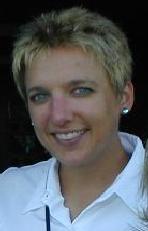Research
Research related to education and diversity in computer science is very broad, far beyond improving the computer science education of our undergraduates. We are exploring ways to introduce computer science concepts into elementary and middle school curricula, improve STEM education through ethnic studies, and learn how females and Latina/os make career decisions in order to later tailor those messages to be more positive for computer science.
Research Project Spotlight

Animal Tlatoque: Using Cultural Themes to Engage Middle School Students in Computer Science
Diana Franklin, Gerardo Aldana, Phillip Conrad
Nationwide, neither females nor Latina/os are pursuing computer science at rates reflective of their demographic representation in the general public. Despite the fact that the reasons behind the under-representation of females and Latina/os in Computer Science are both multiple and varied, our goal is to design, offer, and evaluate a summer program to attract students who would not normally consider computer science. The goal of the camp is to give students confidence in their ability to succeed in the computing, provide a positive experience so that when they make their career decision, they will seriously consider computer science, and enroll them in a long-term academic counseling and tracking program to increase their chance of completing a college degree.
Our two first challenges were to attract and engage students who do not already have a strong desire to pursue computer science. For this, we chose themes that we believe are attractive to females and Latina/os, and our camp is careful to only use computer science as a tool to complete interesting projects related to those themes. We have chosen Mesoamerican culture and conservation of endangered species, which are particularly attractive to Latina/os and females and their families in Santa Barbara. Other institutions can replicate this approach by using different culturally-relevant topics that appeal to their target populations. Hence, the focus is not on ecology or cultural studies as an end, but rather as a means to interest students in Computing.
During the two-week, full-day camp, students will learn about how animals were important to Mayan life in Mythology and rituals, using the computer to draw pictures and animate a Mayan story using Mayan style art. For the animation, students will be using Scratch, a programming language designed specifically for middle school students. Students will work in pairs to populate a website to tell other students about the plight of a particular endangered specie today. Finally, students will have the option of making a computer game or a virtual pet application with Scratch. Amidst this work, we have outdoor games that use computer science algorithms, projectile launching related to a Mayan ballgame, guest speakers and tours.
Research News
 Diana Franklin,
Danielle Harlow
received an NSF grant to study how 4-6 graders learn
computational thinking through a new curriculum...
more
Diana Franklin,
Danielle Harlow
received an NSF grant to study how 4-6 graders learn
computational thinking through a new curriculum...
more
Faculty Research Spotlight: Dr. Chandra Krintz

- Lab: Research on Adaptive Compilation Environments (RACE Lab)
- Research Interests:Next-generation programming language implementation and use: compilers, runtimes, cross-language interoperation, use of languages for parallel and distributed computing. Emerging systems such as cloud computing and emerging languages such as Python, Ruby, X10, and Lua.
What do you find particularly rewarding about your work? Students. Its a privilege to work with, teach, mentor, and encourage our future computer scientists -- at the undergraduate and graduate level. Their potential is unbounded and the field has so much to offer them. Its exciting to be part of their lives and to help them learn and grow.
Tell Us About The curriculum redesign you led: The computer science faculty felt it was time to reflect on how and what we were teaching our students, especially early in the program (their first two years). This is a pivotal point in their careers where many wonder if the major choice they made was the right one. It is important that we teach solid fundamentals and inspire confidence and excitement in our students during this time, so that they are able to succeed, excel, and be excited about pursuing the more advanced upper division and then careers (industry or research) in computer science.
With the help of new faculty hires -- those with experience and expertise that focused on teaching computer science to undergraduates, we embarked on studying and strategizing about how we might exploit our strength in systems and improve our undergraduate lower division curriculum so that it is tightly coupled and fluid as well as hands-on and project driven. Most importantly it must improves student (i) preparation and confidence in the fundamentals, (ii) understanding of the big picture (why what they are learning is important and impacts the world around them), (iii) and engagement in the learning process.